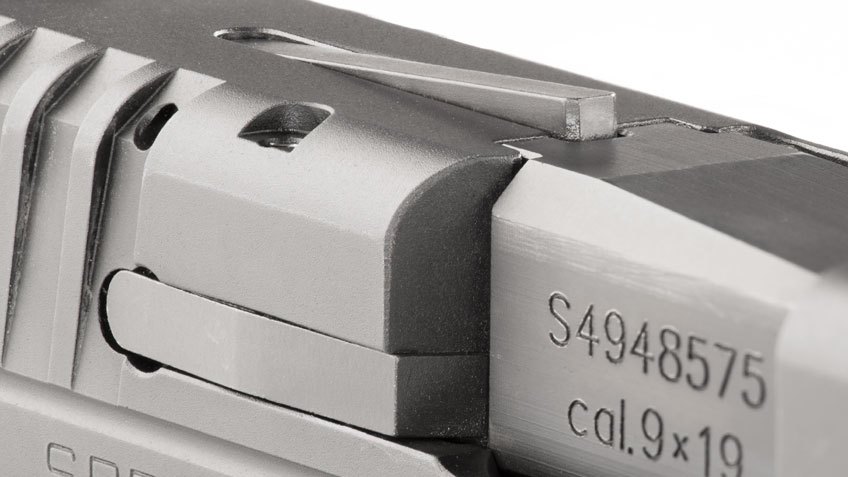
During a recent concealed-carry training class I attended, one of the safety rules repeatedly emphasized was always know the status of your gun. This was primarily pertaining to performing maintenance, safe handling in and out of the holster as well as when loading initially to ensure a round was in the chamber. While a press-check was taught to verify there was a round in the chamber, I saw some of the pistols in the class contained loaded-chamber indicators. Some slightly protruded from the slide, indicating a round in the chamber, while others had slots where the barrel meets the slide. Some had neither. I view loaded-chamber indicators as a good thing to check my gun’s status with a minimum amount of handling. What are your thoughts on them and can they be retrofitted to pistols that come from the factory without one?
Scott Davis, Atlanta, GA
Loaded-chamber indicators are a good idea, especially those that provide a visual and tactile indication that a cartridge is chambered. Unfortunately, many manufacturers include them because some states require them or as a liability hedge, instead of an aid to the user to verify the gun’s status as to whether or not there is a round chambered.
Those pistols with an opening cut in the barrel hood or top of the breechface are effective only when there is enough light to see the cartridge in the chamber. More often than not, this requires the pistol be completely removed from the holster to confirm its status, which may not always be convenient in certain settings.
Pistols with a loaded-chamber indicator that protrudes from the top of the slide just behind the ejection port are effective both visually and from a tactile perspective. They do their job even when you’re wearing heavy gloves, which in themselves present their own problems when handling and manipulating a semi-automatic pistol. In my opinion, such indicators are just ugly—if you are remotely concerned about a firearm’s aesthetics—though there is little question with regard to their functionality.
A good compromise is the external extractor that extends beyond the outside of the slide when a cartridge is chambered and can be felt with the swipe of a finger or thumb. Many of these extractors are manufactured to protrude far enough to allow a colored surface to be exposed, indicating it is resting against a chambered cartridge. This feature allows gun owners to see and feel that the pistol has a round in the chamber.
Sometimes, older pistols with external extractors can be retrofitted or upgraded using newer parts compatible with the older guns to provide a visual and physical verification of a chambered cartridge. A prudent step would be to check with the manufacturer for compatibility before assuming that the new parts will work in an older gun. Many older pistols (such as the originally configured 1911) have internal extractors, which preclude the possibility of using the extractor to perform double duty as a loaded-chamber indicator.
I would hesitate to recommend modifying a barrel or slide by cutting a slot or drilling a hole where maximum pressure is contained when a cartridge is fired. I have heard of gunsmiths adding metal to the outside portion of an external extractor providing a “bump” to feel which would indicate a chambered round. Unless the original heat-treat characteristics are maintained at the hook of the extractor, the effort may be more trouble than it’s worth.
There are other ways of verifying a cartridge is chambered, including a standard press-check. As an aside, if you choose to use the press-check method, practice with dummy rounds until you are comfortable and can easily perform that operation without error. A method I frequently use when initially loading a pistol is to seat a fully loaded magazine in the magazine well and release the slide forward to chamber a round. Once the pistol is back in the holster, I remove the magazine and top it off since it’s missing the round that is now in the chamber. This accomplishes two things. The first verifies a round is in the chamber while the second maximizes the carrying capacity of my pistol.
Remember, a loaded-chamber indicator indicates a round is chambered, but should never be relied upon to verify a clear chamber.





































